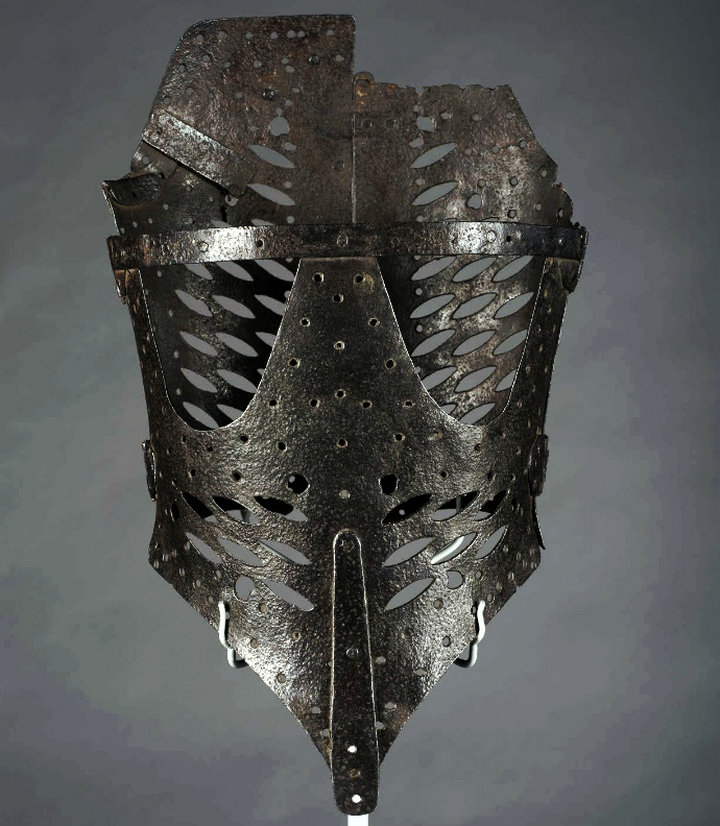

A corset is a garment worn to hold and train the torso into a desired shape, traditionally a smaller waist or larger bottom. In the 18th century, thin strips of baleen, also called whalebone, were favoured for the boning. In the Victorian heyday of corsets, a well-to-do woman’s corset laces would be tightened by her maid.
One of the rarest items in York Castle Museum’s costume and textiles collection, this set of iron stays dates from the seventeenth century.
Stays are an early form of corset, worn in the seventeenth and eighteenth centuries usually made of linen or leather, and stiffened with reeds or whalebone.
Iron stays were made by blacksmiths and armourers for a small number of wealthy women who wore them to help with posture or figure problems. They helped create a fashionable aristocratic body shape.
The stays began life as a flat sheet of iron. The holes were punched into the iron to make it lighter and provide ventilation.
They were beaten into shape; the uneven surface produced by the hammer strokes can still be seen.
The overall shape of the iron stays is the same as fabric stays of the period. Corset of iron with back clasp opening and hinges at either side. The whole is perforated. The front tapers away into a point. A narrow band forms the top front below which are two large holes.
Iron stays were worn over a padded or leather undergarment. Like all corsetry, they were never worn directly next to the skin.
The stays have an internal circumference of 55cm (21.5 inches) and an internal chest circumference of 64cm (25.25 inches). They were probably made for a girl in her late teens.
Hinges at the sides are very similar to the hinges used in suits of armour. We believe these stays were made by an armourer.
Alterations can be seen. The band around the bust was added, probably for reinforcement.
This length of metal at the front was also for reinforcement. This made the stays stronger.
The back has been damaged in two places, a break on the left and a split on the right.
The split has been repaired with a metal plate on the inside.
Stays like these are very rare. Not many were made, and fewer have survived.
Object from York Castle Museums Costume & Textile Collection